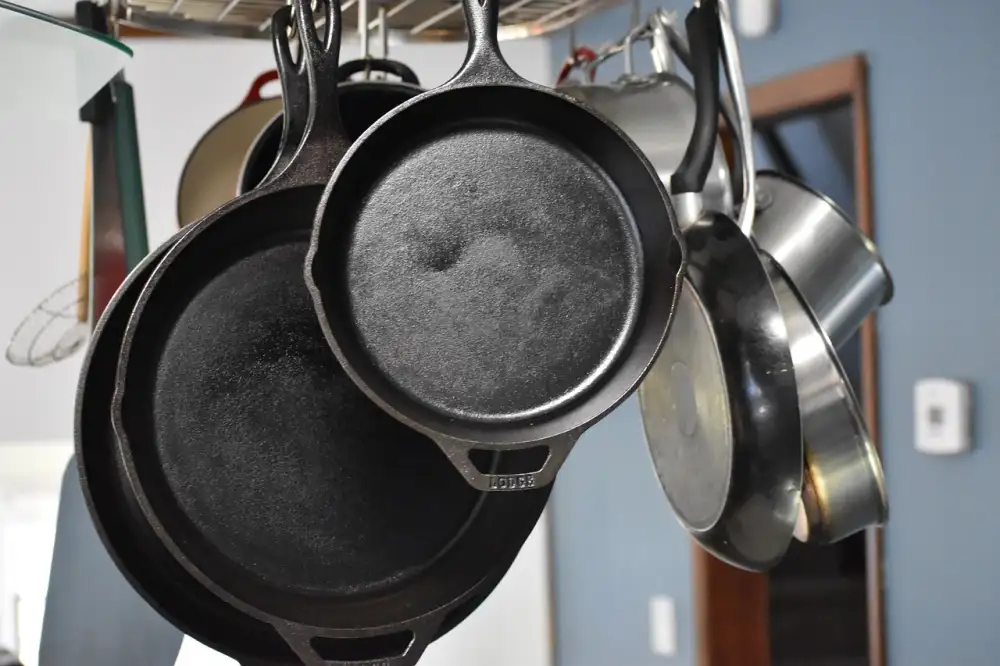Master the Art of Cleaning a Cast Iron Skillet: Essential Tips for a Pristine Home Kitchen

Cleaning a cast iron skillet is an essential skill for any home cook. This versatile and durable kitchen tool requires special care to maintain its quality and ensure it lasts for years to come. Properly cleaning a cast iron skillet not only removes food residue but also helps prevent rust and keeps the skillet in pristine condition. In this article, we will explore the necessary steps to master the art of cleaning a cast iron skillet, ensuring a clean and beautiful kitchen every time you cook.
Gather necessary supplies for cleaning
To effectively clean a cast iron skillet, it is important to gather the necessary supplies beforehand. Here are the essential items you will need:
1. Hot water: This will be used to rinse off any food residue and loosen stubborn stains.
2. Soft-bristle brush or sponge: Choose a brush or sponge specifically designed for cleaning cast iron. Avoid using abrasive materials that can damage the skillet's surface.
3. Salt: Coarse salt acts as a gentle abrasive and helps remove stuck-on food particles without scratching the skillet.
4. Cooking oil: Opt for a neutral oil with a high smoke point, such as vegetable or canola oil. This will be used to season the skillet after cleaning.
By having these supplies ready, you'll be well-prepared to tackle the task of cleaning your cast iron skillet and maintaining its pristine condition.
Preparing the skillet for cleaning
Before diving into the process of cleaning a cast iron skillet, it's essential to prepare it properly. Start by allowing the skillet to cool down completely after use. This will prevent any potential accidents or burns during the cleaning process. Once cooled, gently scrape off any food residue using a spatula or a wooden spoon. Be careful not to scratch the surface of the skillet. Next, rinse the skillet with warm water to remove any loose particles. Avoid using soap at this stage as it can strip away the skillet's seasoning.
Cleaning the skillet with hot water and a brush
To clean your cast iron skillet, start by rinsing it with hot water immediately after use. Avoid using soap as it can strip away the skillet's seasoning. Instead, use a stiff brush or sponge to scrub away any food particles. Be sure to pay extra attention to any stuck-on residue. The hot water will help loosen and remove the debris, while the brush will help to scrub it away. Rinse the skillet thoroughly to ensure all traces of food are removed.
Removing stubborn residue with salt and oil
Removing stubborn residue with salt and oil is an effective method to restore the pristine condition of your cast iron skillet. After cleaning the skillet with hot water and a brush, sprinkle a generous amount of coarse salt onto the surface. Using a paper towel or a clean cloth, scrub the salt into the stubborn residue, applying gentle pressure. The abrasive nature of the salt helps to loosen and lift off any remaining food particles. Once you have scrubbed away the residue, rinse the skillet thoroughly with hot water. Next, add a small amount of oil to the skillet and use a paper towel to spread it evenly across the entire surface. This step helps to re-season the skillet and prevent it from rusting. Heat the skillet on low heat for a few minutes until all excess moisture has evaporated. Finally, wipe off any excess oil with a clean cloth or paper towel. By following these steps, you can ensure that your cast iron skillet remains in excellent condition for years to come.
Drying the skillet thoroughly
After cleaning your cast iron skillet, it is crucial to dry it thoroughly to prevent any moisture from causing rust. Start by using a clean dishcloth or paper towels to remove any excess water. Then, place the skillet on a stovetop burner set to low heat for a few minutes. This will help evaporate any remaining moisture. Alternatively, you can also place the skillet in a preheated oven at 350°F (175°C) for about 10 minutes. Once completely dry, allow the skillet to cool before moving on to the next step of seasoning. Remember, proper drying is essential for maintaining the longevity and quality of your cast iron skillet.
Seasoning the skillet to maintain its quality
Seasoning the skillet is an essential step to maintain its quality and prevent rust. After cleaning and drying the skillet, apply a thin layer of oil all over its surface. Use a paper towel to spread the oil evenly, ensuring that every inch is covered. The oil acts as a protective barrier, preventing moisture from coming into contact with the iron. Place the skillet upside down in an oven preheated to 350°F (175°C) for one hour. This process allows the oil to polymerize, forming a natural non-stick coating on the skillet's surface. Once done, let it cool completely before removing it from the oven. Repeat this seasoning process regularly to keep your cast iron skillet in top condition.
Storing the skillet properly
Storing the skillet properly is crucial to ensure its longevity and prevent any damage. After cleaning and drying the skillet, it's important to store it in a dry place to avoid rusting. One option is to place a paper towel or cloth inside the skillet to absorb any moisture. Another option is to lightly coat the skillet with a thin layer of oil before storing it. This will help create a protective barrier against moisture and prevent rust from forming. Additionally, make sure to stack your skillets carefully, placing a piece of parchment paper or a soft cloth between each one to prevent scratching. By following these storage tips, you can keep your cast iron skillet in pristine condition for years to come.
In conclusion, mastering the art of cleaning a cast iron skillet is essential for maintaining a pristine home kitchen. By following these tips, you can ensure that your skillet remains in top condition for years to come.
To recap, gather all the necessary supplies before starting the cleaning process. Prepare the skillet by removing any food residue and rinsing it with hot water. Use a brush to scrub away any remaining debris.
For stubborn residue, create a paste using salt and oil and gently scrub the skillet. This will help remove any tough stains without damaging the surface.
After cleaning, make sure to dry the skillet thoroughly to prevent rusting. You can either air dry it or use a clean towel to wipe away any moisture.
To maintain its quality, season the skillet regularly by applying a thin layer of oil and heating it on low heat for a few minutes. This will help create a non-stick surface and protect it from rust.
Lastly, store your cast iron skillet properly by placing a paper towel or cloth between stacked skillets to prevent scratching. Store it in a dry place to avoid moisture buildup.
By following these steps and incorporating them into your regular kitchen routine, you can enjoy the beauty of delicious creations while keeping your cast iron skillet in pristine condition. Happy cooking!
Published: 13. 12. 2023
Category: Home



